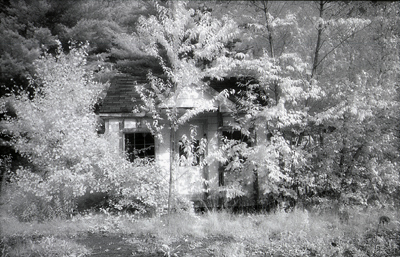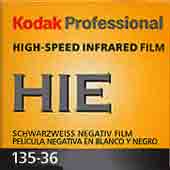HS INFRARED:
NORMAL dr5 ISO: 200
Nothing else to say here. Same effect as the neg version with more tonal-range and sharpness, a beautiful B&W infrared image in a chrome! Due to the nature of this film, it does not color/tone well. It will always be neutral. CAN ONLY RUN IN DEV 1-NEUTRAL.
NOTE: As noted by some camera manufactures, HSIR cannot run in some cameras. If your camera has an IR advance sensor, check that it can run HSIR without fogging it.
THERE ARE NOW 2 PROCEDURES FOR EXPOSING HS-IR FILM.
1. FOR the 25-R filter, with the filter in place ON THE LENS, set your iso to 800iso for normal exposure. 400iso for a flatter-dreamier look. 1000iso for an increased dynamic range [punch]. FOR the 29 filter, with the filter in place, set your iso to 100iso.
2. With a 25-R or 29 filter on the camera. DONOT PUT YOUR CAMERA ON 'AUTO'. USE A HAND HELD METER & meter without the filter. Shoot H/S Infrared @ 200iso. This film will push and pull without image quality loss. NOTE; if you are an inexperienced 'IR' shooter, be aware that you cannot see IR light nor can it be metered. Exposing IR film comes with experience. If there is an abundance of IR light in your scene (some situations reflect more or less IR light) and you over expose your film, there might not be any saving your images. Since these are now chromes, it might be especially important to widely bracket HS-IR film. You can shoot it as low as 100iso and as high as 320iso. 100iso produces a better d-max. Clipping is recommended if you change the suggested speed. Testing is advisable!
BE SURE TO BRACKET YOUR EXPOSURE


© L.Walker
